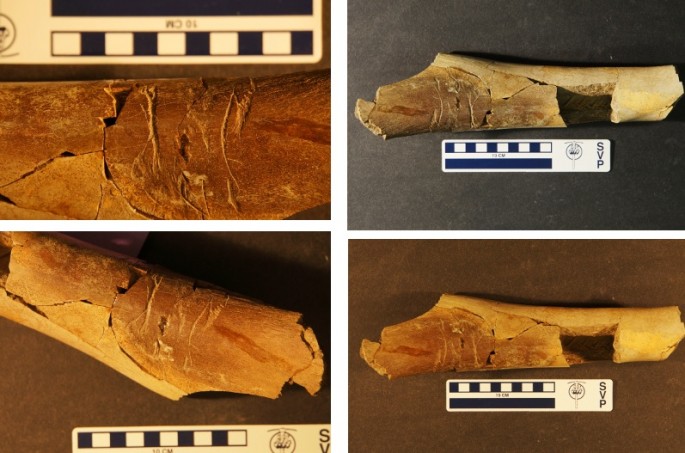New findings about the Tyrannosaurus rex continue to amaze scientists as the King of Dinosaurs reveal more tantalizing evidence from fossilized remains. In this new study about the mighty T-rex, researchers reveal that T-rexes apparently ate each other.
The fossils were uncovered from the Lance Formation in Wyoming which is a late Cretaceous rock formation where the remains appear to possess some deep grooves and obvious teeth markings.
In this new study led by paleontologist Matthew McLain from the Loma Linda University, examination and analysis of the fossils revealed teeth depth and the shape of the predator that devoured the flesh off the bone, belonging to a huge dinosaur. However, the main indication where scientists considered that a T-rex left these evidence are smaller grooves that were observed that suggest that the teeth of the predator had ragged edges.
Scientists already considered that the T-rex was a cannibal, based on prior studies. During a 2007 study, researchers estimate that the T-rex was strong enough to throw food into the air weighing 110 pounds, about 15 feet up and then snatching it in mid air. This discovery is known as inertial feeding which involves stripping flesh off the bones without crushing it.
Since the T-rex can neither feed nor chew it with its hands and mouth, the T-rex is thought to feed in such a way that it swallowed its prey whole using powerful neck muscles.
Another study in 2012 investigated the T-rex's bite force where scientists estimate that the T-rex is powerful enough to produce 57,000 newtons or resulting in a force of 12,800 pounds.
In another study, these fecal fossils apparently measure up to 1.5 feet that is one third the mass from broken shards of bones. This scat suggests that the T-rex also possessed a fast metabolism and even a shorter time for digestion. Another fossilized fecal matter found called coprolite which had been left by another Tyrannosaur species revealed bone debris and undigested muscle.
This new study reveals new information about how T-rexes were able to survive via these feeding patterns which gives a clearer idea of how the T-rex caught and ate their prey.



























